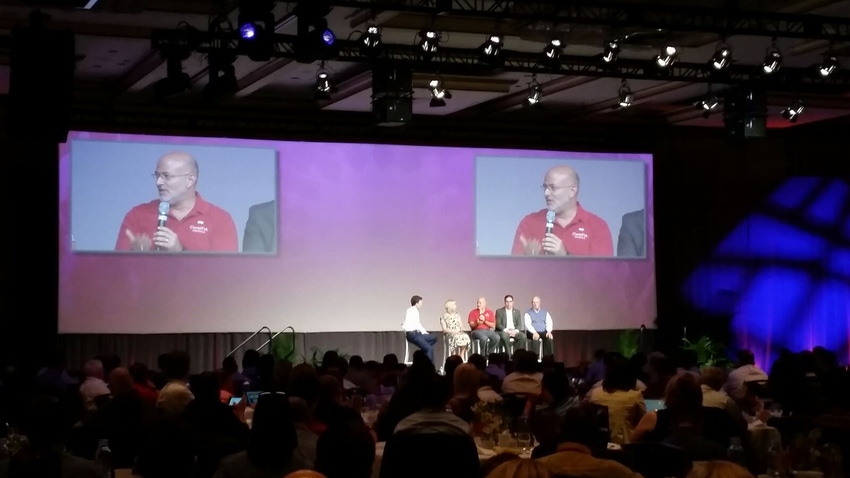While transformation does not happen overnight, it is important for providers to work with customers to come up with timelines and concrete plans that address their specific pain points.

Considering all the talk about cloud adoption, the majority of the crowd in the keynote presentation at CompTIA’s ChannelCon have not yet developed meaningful business with cloud.
Todd Thibodeaux, CompTIA COO and president, kicked off the event on Tuesday with an informal poll, asking the audience to weigh in on what types of business have proven meaningful to the audience of MSPs, solution providers, and VARs. Managed services was the clear winner and the most important trend, while only 20-30 percent of the room reported to have developed a meaningful business with cloud services.
“The bottom line here is there is no magic bullet,” Thibodeaux said. “What it takes is a lot of hard work, dealing with your customers, listening to them, and figuring out what will help their business grow.”
While transformation does not happen overnight, it is important for providers to work with customers to come up with timelines and concrete plans that address their specific pain points.
Existing Businesses vs. New Businesses
Another challenge when considering business transformation is the difference between existing businesses and new businesses. If your customers has an established business, they may be fine with “being okay”, Thibodeaux said, but for new businesses, they want to be the best in breed.
Existing businesses tend to have an “if it ain’t broke, don’t fix it” mentality, as they have entrenched infrastructure and are more likely to be scared of change. New businesses are given a blank slate and are born wireless or in the cloud; they have to embrace change and risks.
Customers want to make change in the smoothest, easiest way possible. They are worried about productivity loss associated with new technologies, uncertain ROI, and a lack of financing. Providing customers with a timeline of their transformation and addressing these uncertainties can ensure that they are successful with the technology that they are purchasing from you.
What can we do to help Customers (and Ourselves) Succeed?
Thibodeaux went through several ways providers can make sure that their clients are successful by transforming their business at a rate that makes sense to them.
Start by giving up on the idea that you can make people make massive changes overnight. Fear and hesitation is a natural human emotion; the more you push the more they’ll push back. Talk about transformation as a series of steps.
Provide succession plans for clients. A business may go from lifestyle to growth overnight. Being in the know for the timeline of those things is important. Get customers and partners on a timeline to build trust and confidence.
Don’t count on churn and other providers screwing up and losing customers. You have to mine your own gold. You must be prospecting your customers all the time. Don’t just fix their problems, find their pain points.
Commit to your own transformation. Can you as a company make your own commitment to transformation? Are you taking a hard look about where you are and where you want to be?
Customer Success Story: MJ Shoer, Jenaly Technology Group
As part of the keynote, Thibodeaux brought up several MSPs to hear of their customer success stories. MJ Shoer, president and virtual chief technology officer of New Hampshire-based Jenaly Technology Group, asked how many people in the audience have had a client call and wanted to bring their entire infrastructure to the cloud. As expected, no one raised their hand.
Shoer said this happened to him; a law firm client called and wanted to replace its on-premise infrastructure with cloud infrastructure. When Jenaly went through the analysis, it found that going fully cloud would cost 3x more than doing on on-premise replacement. What they ended up doing was providing a hybrid cloud implementation. The client is using Office 365 and SharePoint, in addition to other technologies.
In addition to evaluating your customers’ needs, look at your customers competitive landscape, Shoer said. “Is their competition doing anything that is leveraging technology that maybe they’re not?”
About the Author(s)
You May Also Like


